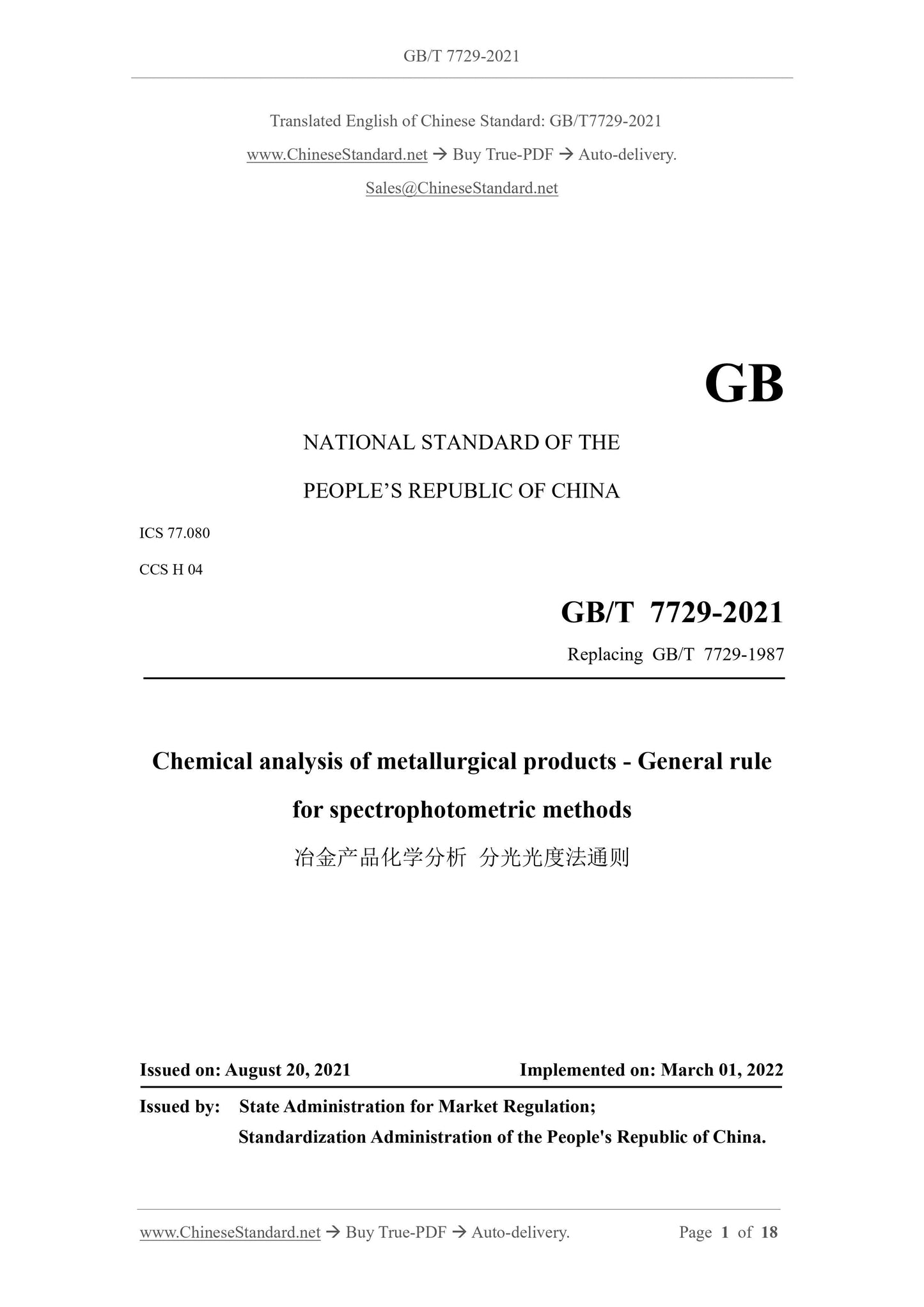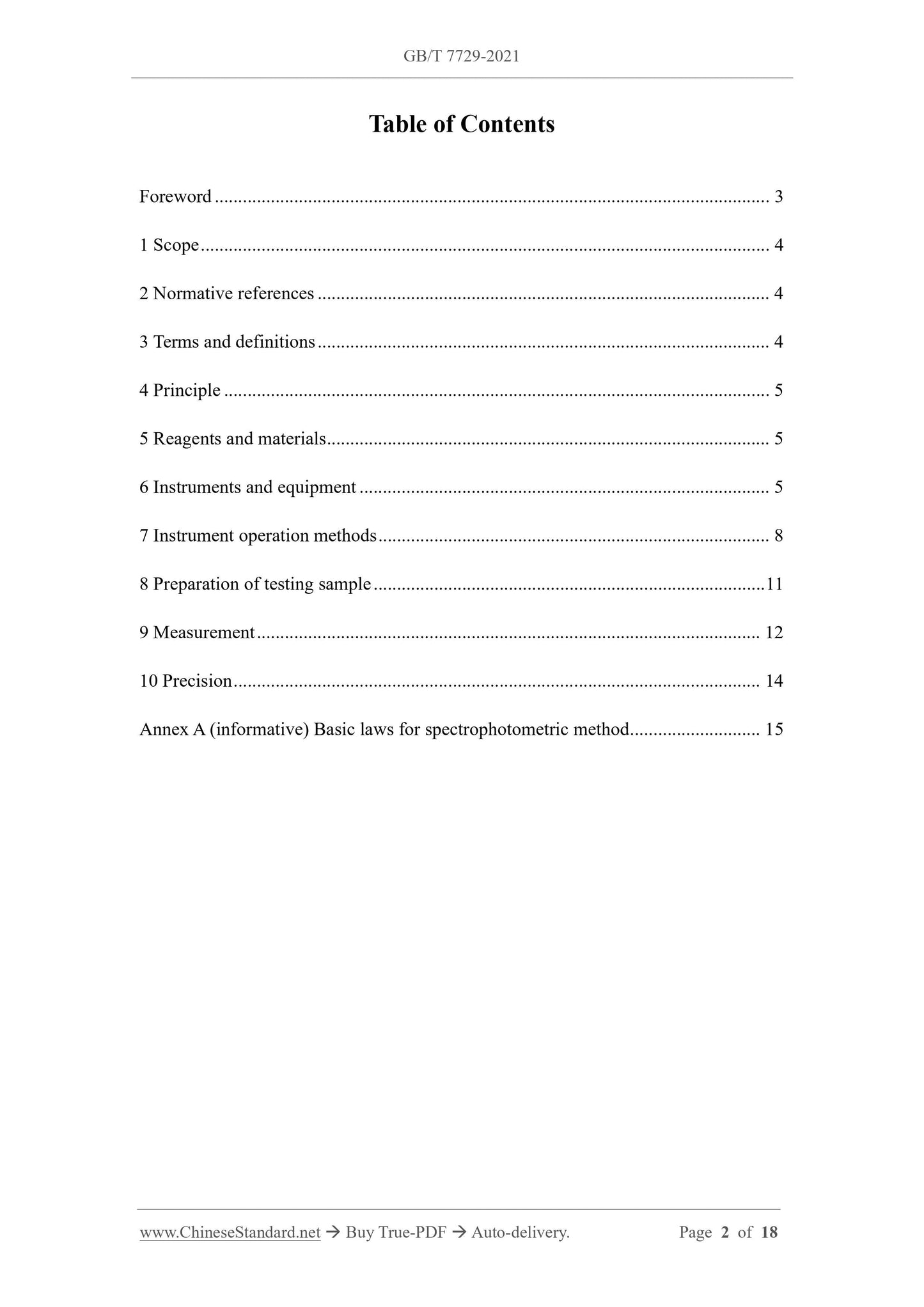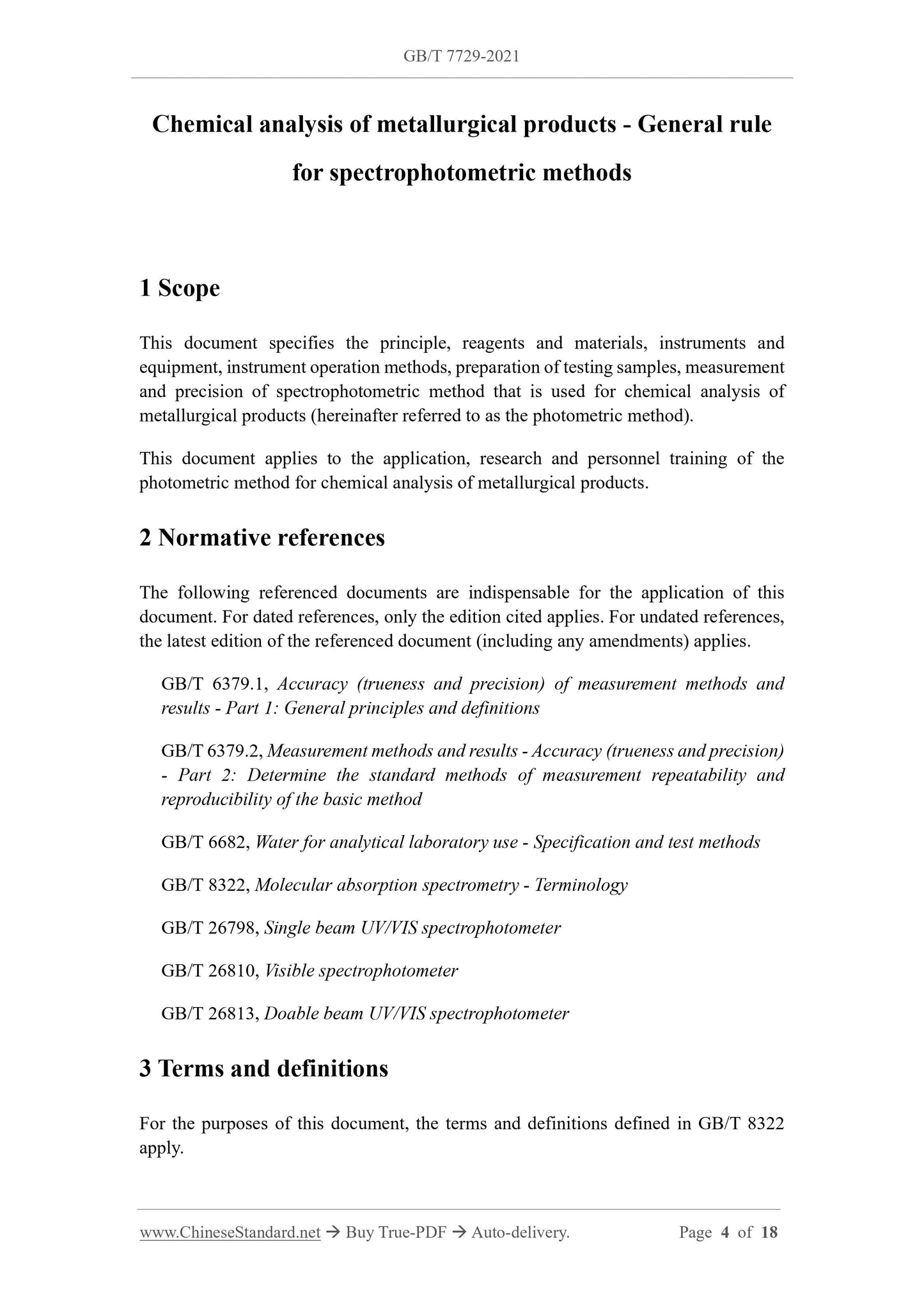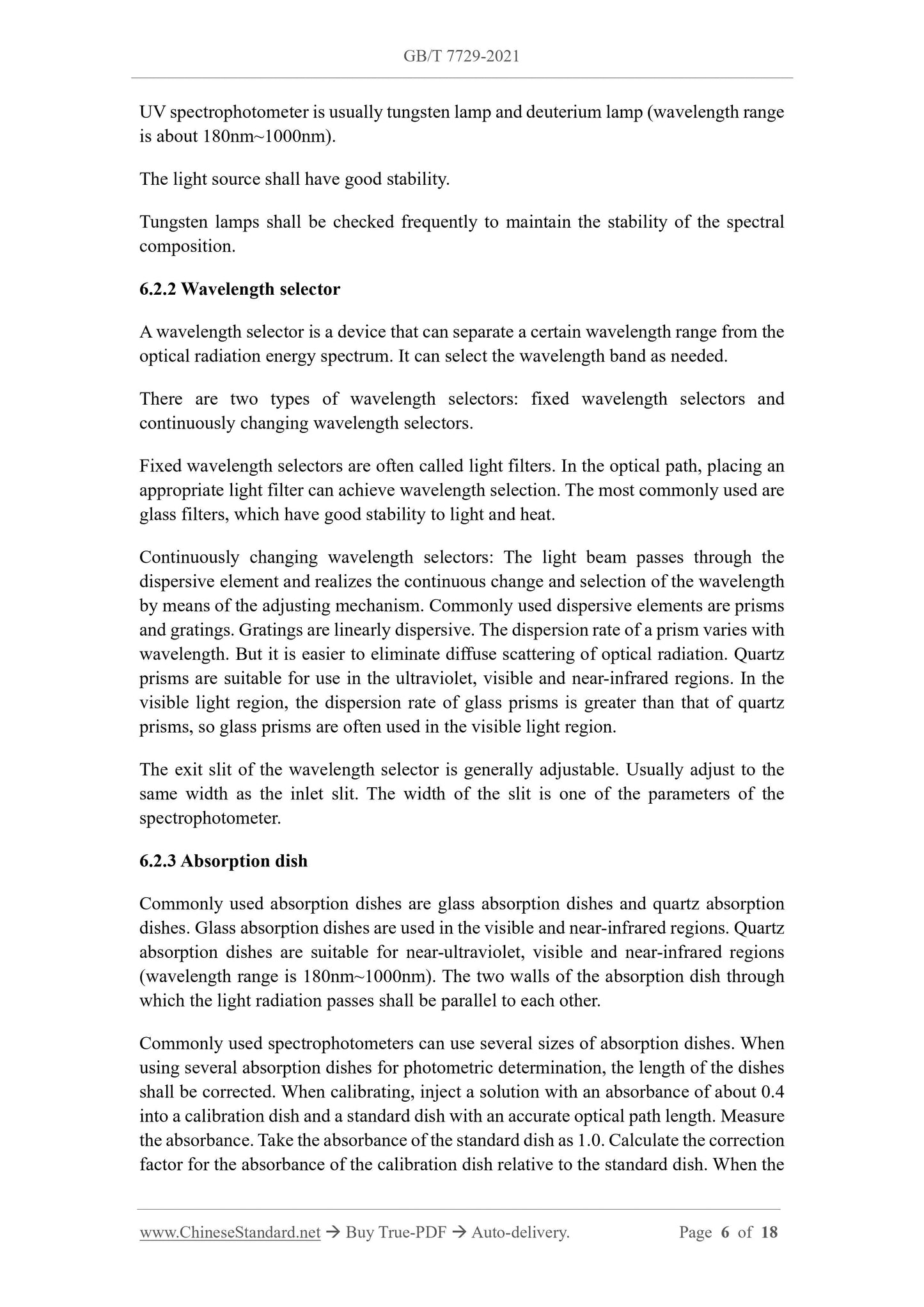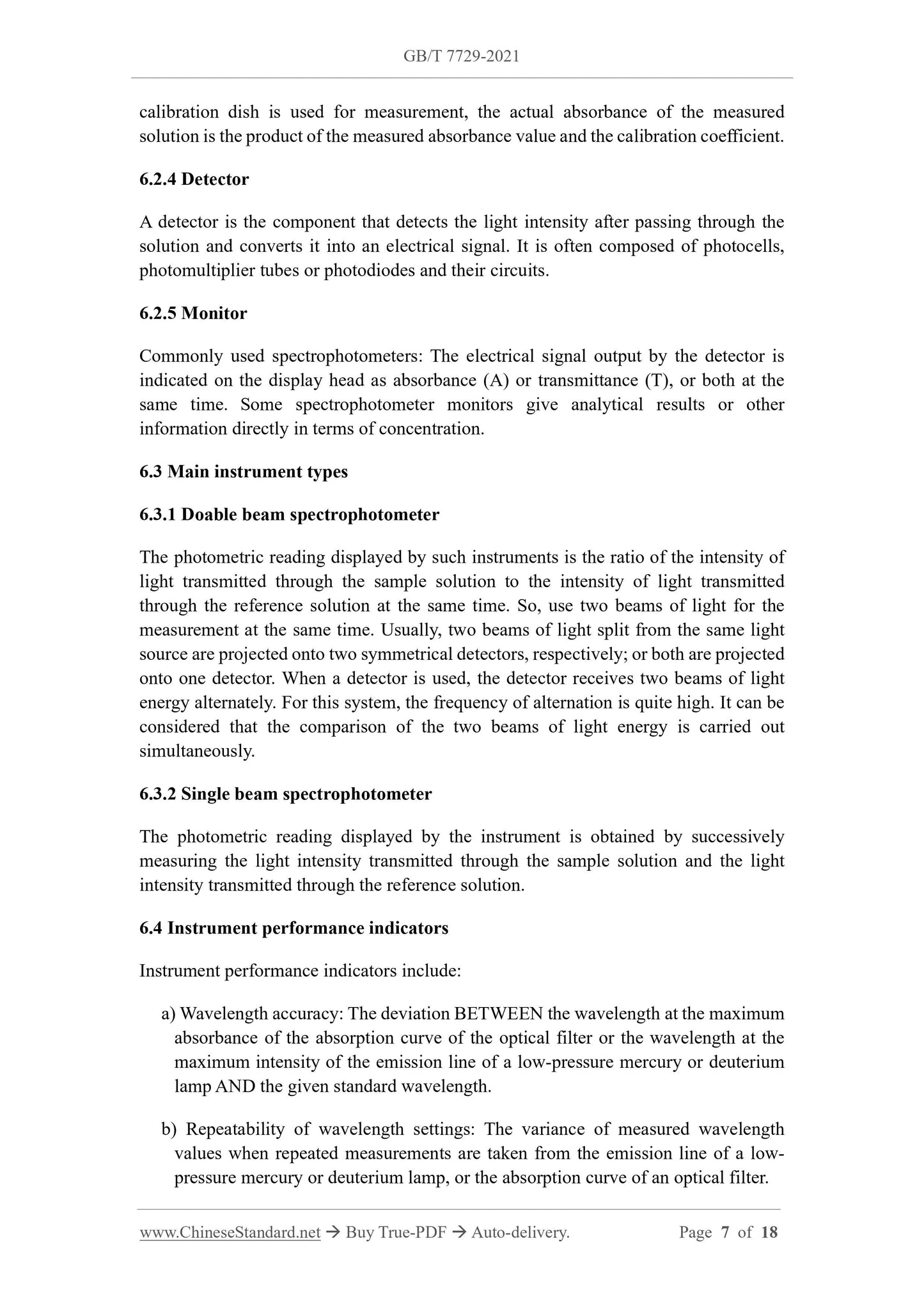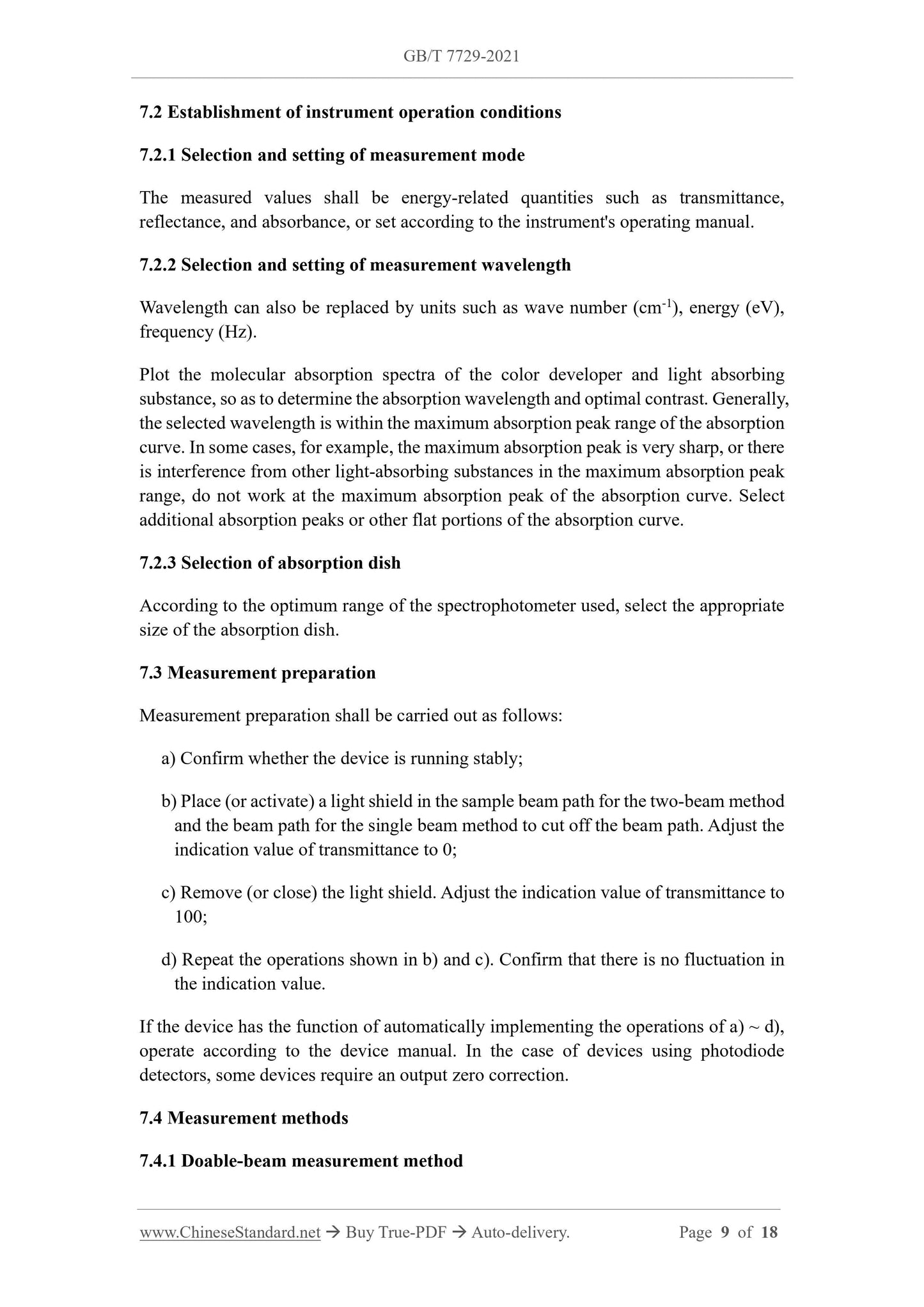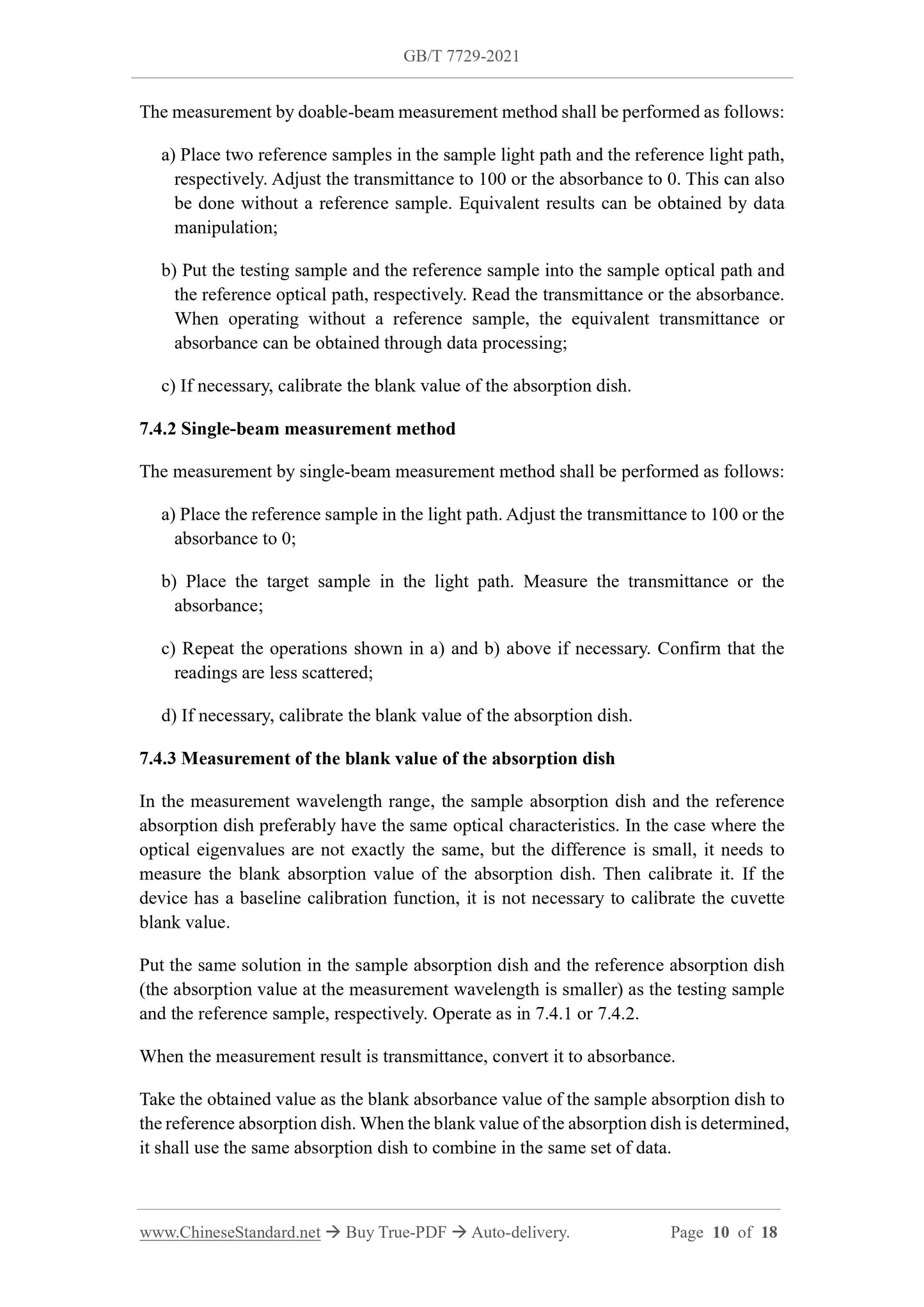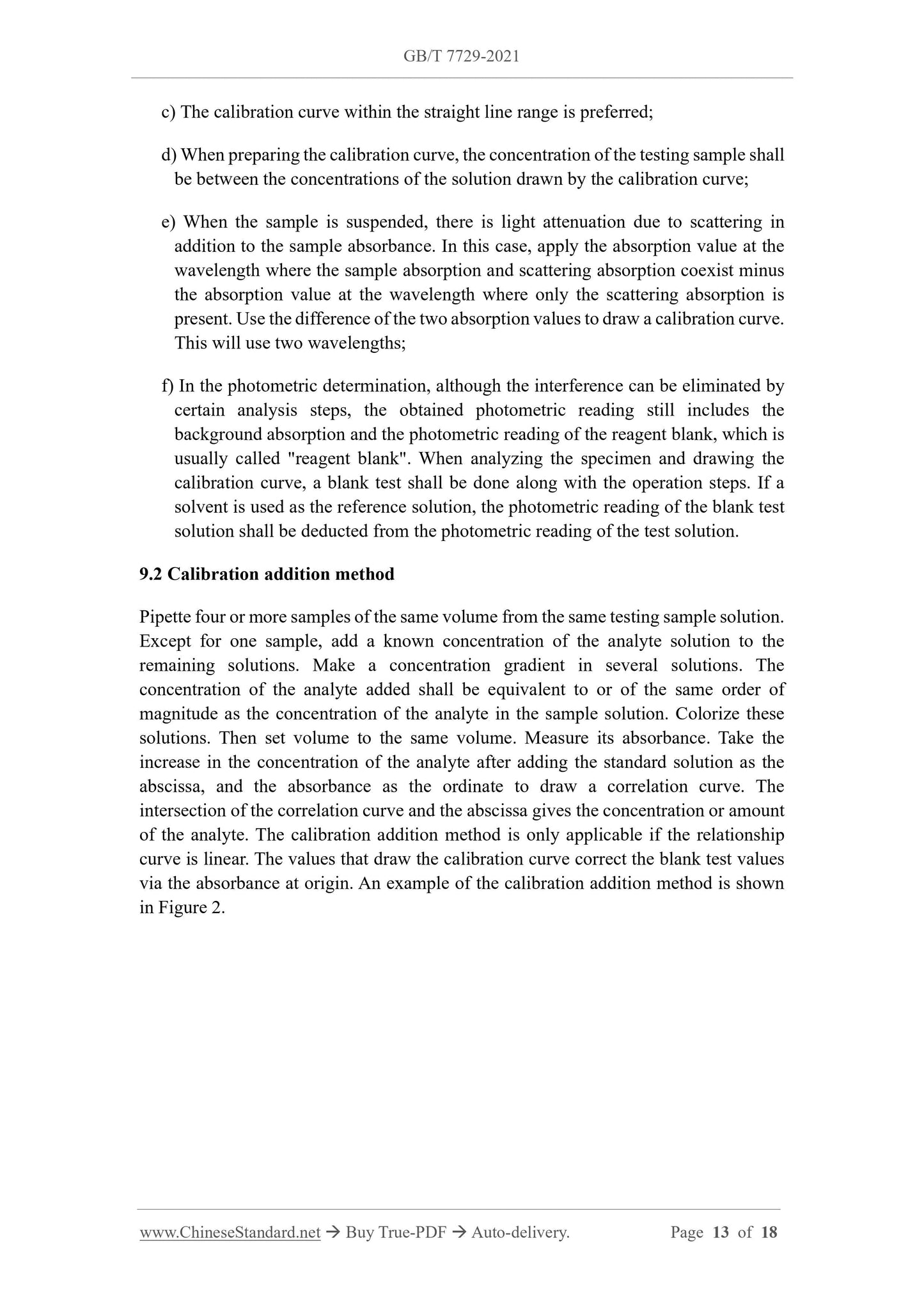1
/
of
8
www.ChineseStandard.us -- Field Test Asia Pte. Ltd.
GB/T 7729-2021 English PDF (GB/T7729-2021)
GB/T 7729-2021 English PDF (GB/T7729-2021)
Regular price
$230.00
Regular price
Sale price
$230.00
Unit price
/
per
Shipping calculated at checkout.
Couldn't load pickup availability
GB/T 7729-2021: Chemical analysis of metallurgical products���General rule for spectrophotometric metho
Delivery: 9 seconds. Download (and Email) true-PDF + Invoice.Get Quotation: Click GB/T 7729-2021 (Self-service in 1-minute)
Newer / historical versions: GB/T 7729-2021
Preview True-PDF
Scope
This document specifies the principle, reagents and materials, instruments andequipment, instrument operation methods, preparation of testing samples, measurement
and precision of spectrophotometric method that is used for chemical analysis of
metallurgical products (hereinafter referred to as the photometric method).
This document applies to the application, research and personnel training of the
photometric method for chemical analysis of metallurgical products.
Basic Data
| Standard ID | GB/T 7729-2021 (GB/T7729-2021) |
| Description (Translated English) | Chemical analysis of metallurgical products???General rule for spectrophotometric metho |
| Sector / Industry | National Standard (Recommended) |
| Classification of Chinese Standard | H04 |
| Word Count Estimation | 14,156 |
| Issuing agency(ies) | State Administration for Market Regulation, China National Standardization Administration |
Share
